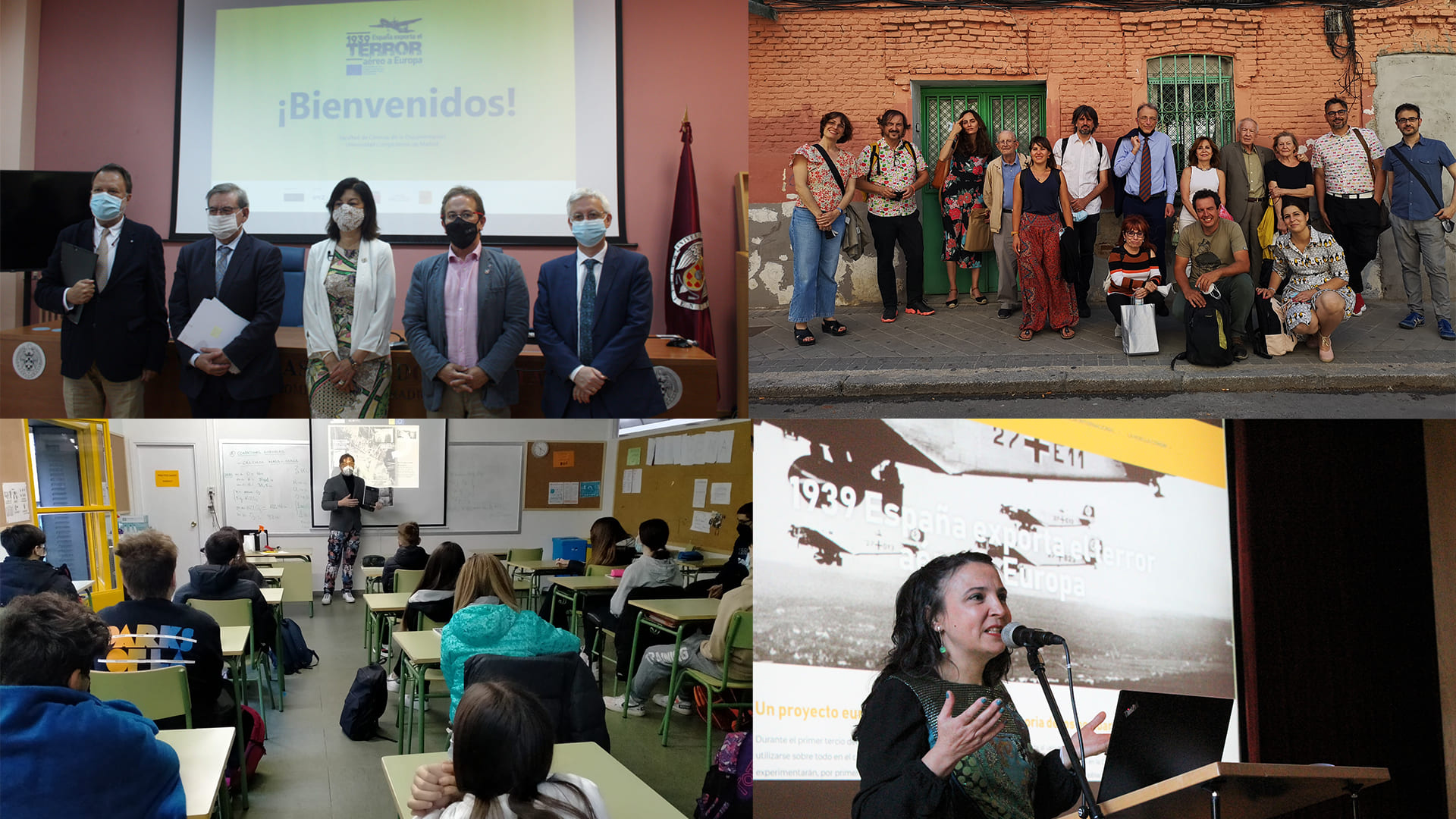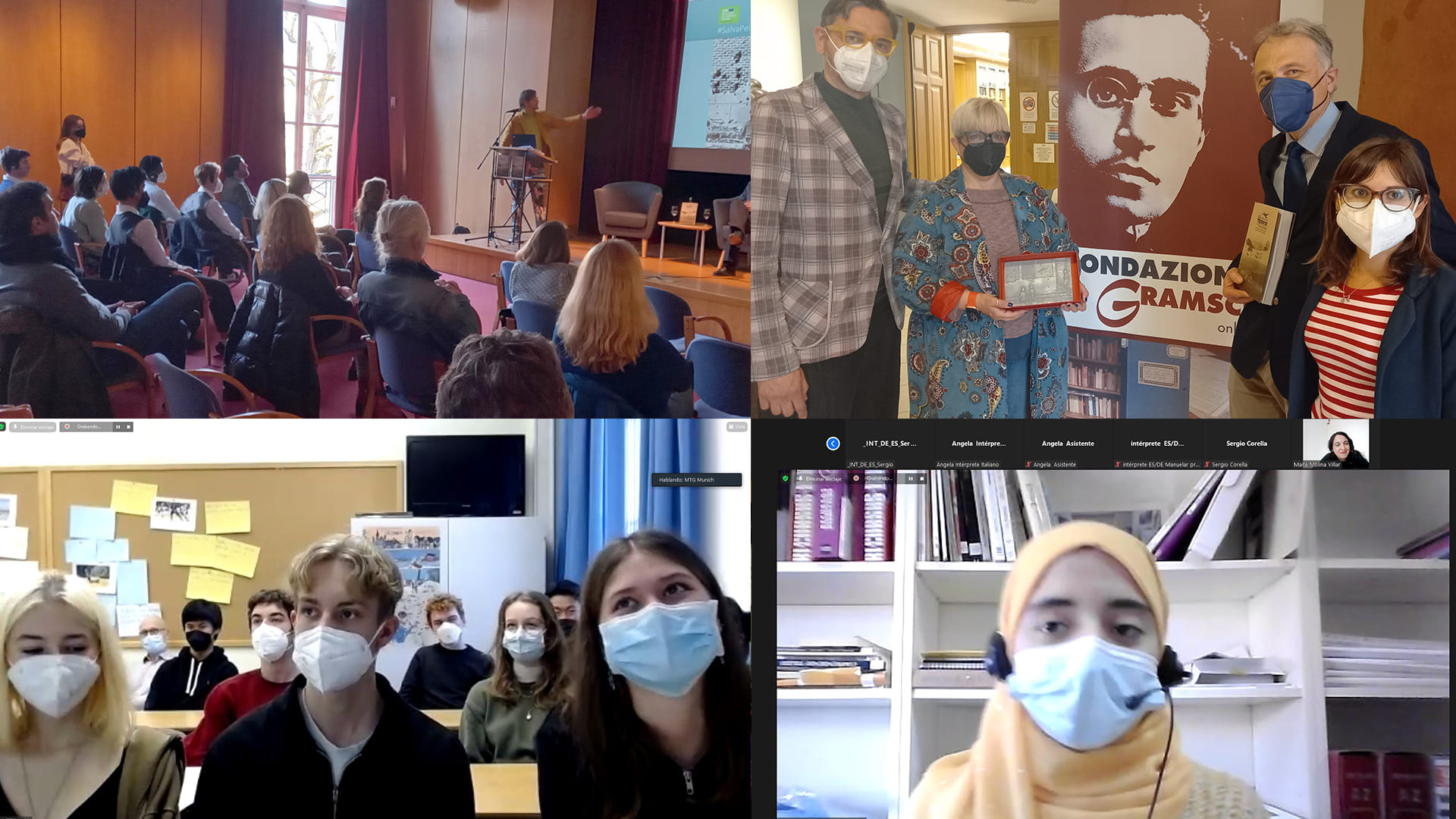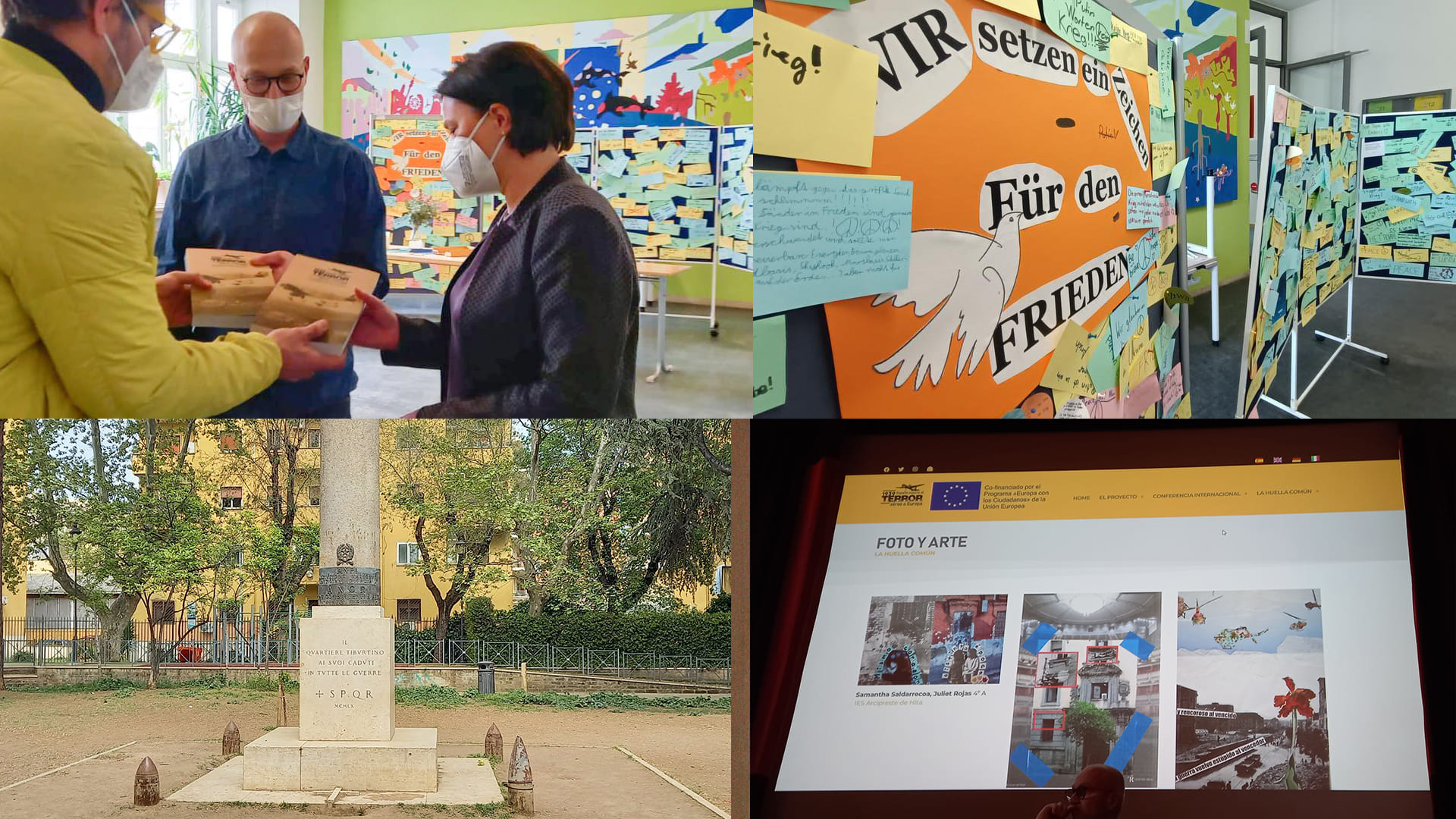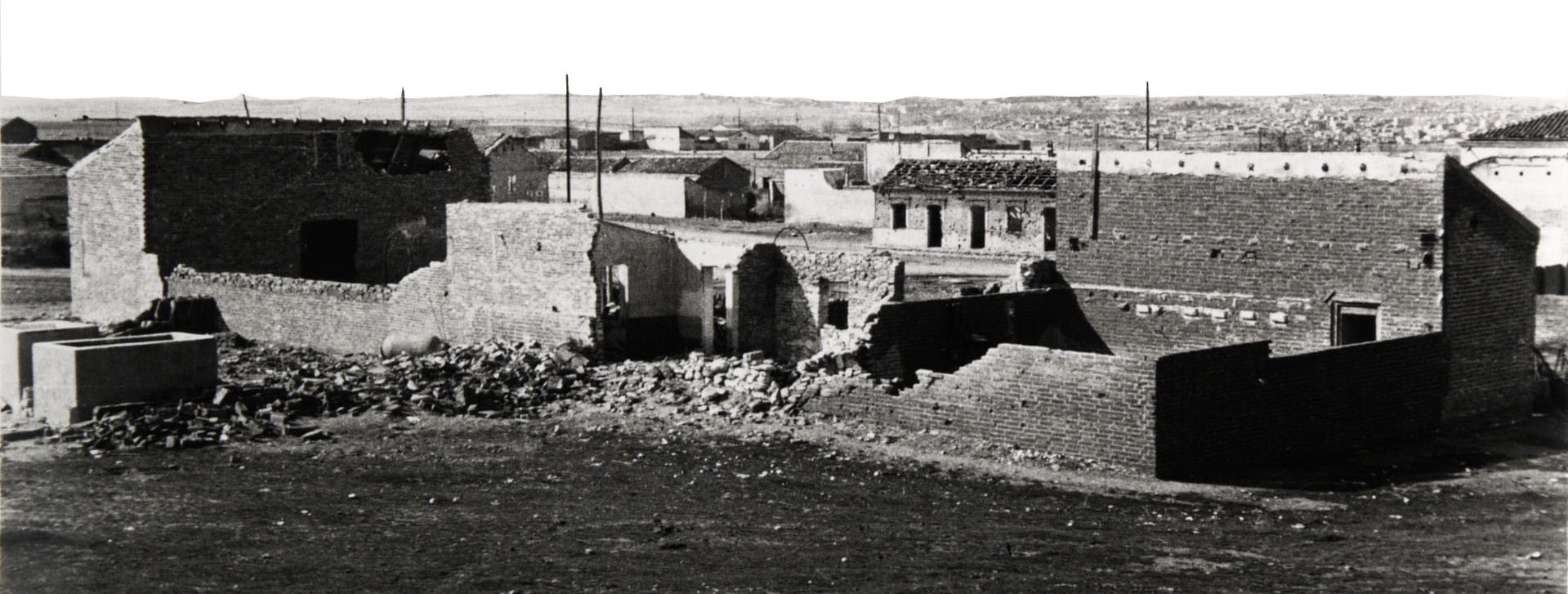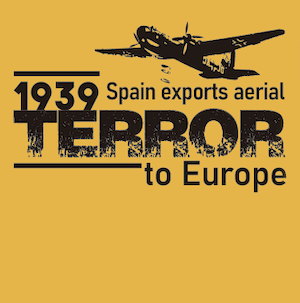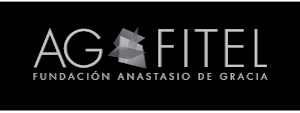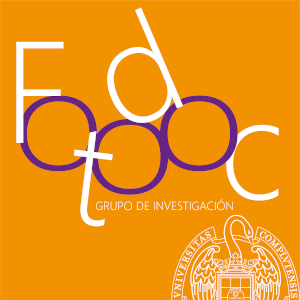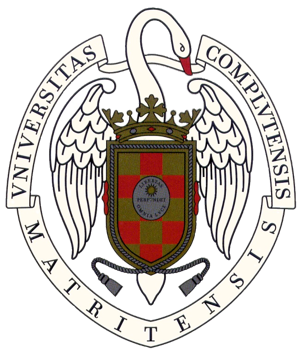The project
The start of an atrocious strategy
During the Spanish Civil War (1936-1939), the military rebels against the Republic were supported by various branches of the Italian and German armies, as well as state-of-the-art military technology sent by the dictators of both countries, Benito Mussolini and Adolf Hitler. The Spanish conflict served as an experimental ground for testing new armaments and, above all, for the practice of the latest destruction strategies and tactics.
The project 1939 Spain exports air terror to Europe studies and disseminates the relationship between the end of the conflict in Spain and the beginning of the Second World War, focusing on the origin of the air attacks on the civilian population. An atrocious strategy, tested by German and Italian aviation on Spanish citizens, which was “exported” by its creators to other countries at the start of the European conflict in September 1939. The city of Madrid is one of the fundamental axes of the project, as it was the first major European capital to suffer the horror of bombing on its rooftops, a tactic that raised international rejection, with demonstrations in Paris, London, Stockholm, New York and other cities.
Multidisciplinary and multinational
The Anastasio de Gracia Foundation is leading this project in which the Fotodoc Research Group of the Complutense University of Madrid, the Pablo Iglesias Foundation, the Gramsci Foundation, the Italian General Confederation of Labour and the Memory, Responsibility and Future Foundation are participating. It also has funding from the European Commission’s European Executive Agency for Education and Culture, through the European Memory line of the Europe for Citizens programme, awarded in 2019.
Por lastly, 1939 Spain exports air terror to Europe has been designed in a multidisciplinary and multinational way, in line with the general objectives of the European programme, among which are, “to contribute to the understanding of the common European history”. as well as “to raise awareness of the memory, history and common values of the European Union based on the promotion of peace and the well-being of its peoples, stimulating debate and reflection”.
Objectives
The specific objectives of the project are:
- Recover the memory of the thousands of victims who died in Madrid during the air raids.
- To analyse the influence of the Spanish dictatorship, the current democracy and the European Union in the oblivion of these tragic events.
- To encourage transnational dialogue on the need for peace for the construction of Europe.
- To make visible the continuity of the strategy of aerial terror in today's wars.
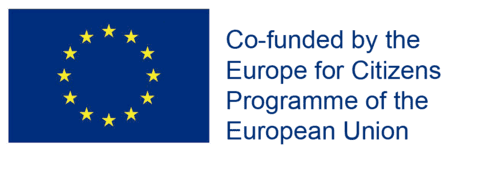
The project "1939 Spain exports air terror to Europe" has been funded by the European Union in the framework of the "Europe for Citizens" programme.
7 events were organised in the framework of this project:
Event 1
Participation: the event brought together 51 citizens, including 1 from the city of Nuremberg (Germany), 1 from the city of Geneva (Switzerland), 1 from the city of Caen (France), 2 from the city of Rome (Italy), 1 from the city of London (Great Britain), 2 from the city of Valencia (Spain), 1 from the city of Berlin (Germany), 1 from the city of Gernika (Spain), 40 from the city of Madrid (Spain) and 1 from the city of Barcelona (Spain).
Place/Dates: the meeting took place in Madrid (Spain) from 03/06/2021 to 04/06/2021.
Brief description: International Conference held at the Faculty of Documentation Sciences of the Complutense University of Madrid whose objective was to analyse the origin of the systematic bombing of the civilian population, as a military strategy to spread terror. A tactic that was experimented for the first time in Madrid, at the beginning of the Civil War, and which was later transferred to the rest of Europe during the Second World War.
Event 2
Participation: the event brought together 52 citizens, 52 of whom came from the city of Madrid (Spain).
Place/Date: the meeting took place in Madrid (Spain) from 22/10/2021 to 29/10/2021.
Brief description: organisational meeting of the project’s pedagogical coordinator with the teachers and students of the Instituto de Estudios Superiores Arcipreste de Hita to initiate the research process that will end with the exhibition La huella común, on the bombing of the cities of Munich and Madrid, in the Second World War and the Spanish Civil War, respectively.
Event 3
Participation: the event brought together 37 citizens, 23 of whom came from the city of Madrid (Spain) and 14 from the city of Munich (Germany).
Place/Date: the meeting took place simultaneously in Madrid (Spain) and Munich (Germany) from 02/11/2021 to 10/11/2021.
Brief description: meeting of the pedagogical coordinator of the organisational project with the teachers and students of the Centro Cultural Palomeras (Madrid) and Maria Theresia Gymnasium (Munich) to initiate the research process that will end with the exhibition La huella común, about the bombing of the cities of Munich and Madrid, in the Second World War and the Spanish Civil War, respectively. Throughout this phase, the following tasks were carried out.
Event 4
Participation: the event brought together 89 citizens, 75 of whom came from the city of Madrid (Spain) and 14 from the city of Munich (Germany).
Place/Date: the meeting took place simultaneously in Madrid (Spain) and Munich (Germany) from 09/12/2021 to 11/12/2021.
Brief description: Meeting of the pedagogical coordinator of the project with the students and teachers of IES Arcipreste de Hita (Madrid), Centro Cultural Palomeras (Madrid) and Maria Theresia Gymnasium (Munich) to coordinate the design and development of the pieces and works that make up the exhibition La huella común.
Event 5
Participation: the event brought together 125 citizens, 14 of whom came from the city of Munich (Germany), 2 from the city of Rome (Italy) and 109 from Madrid (Spain).
Place/Date: the meeting took place simultaneously in Madrid (Spain), Rome (Italy) and Munich (Germany) on 17/02/2022.
Short description: International dialogue between secondary school students, teachers and experts from Germany, Italy and Spain on the traces left by the horror of the bombings in the cities of Munich, Rome and Madrid during the Second World War and the Spanish Civil War. Around 125 students and teachers took part in the meeting, through the delegated representation of their peers. It was held via videoconference, with translation into the languages of the three participating countries: German, Italian and Spanish.
Event 6
Participation: the event brought together 47 citizens, 3 of whom came from the city of Madrid (Spain) and 44 from the city of Munich (Germany).
Place/Date: the meeting took place in Munich (Germany) on 06/04/2022.
Brief description: the meeting was devoted to the presentation of the virtual exhibition The Common Trace, based on the artistic works and historical research carried out by secondary school pupils from the schools participating in the project in Spain and Germany and with the participation of teachers from Italy.
Event 7
Participation: the event allowed the meeting of 342 citizens, of which 2 came from the city of Madrid (Spain) and 340 from the city of Rome (Italy).
Place/Date: the meeting took place in Rome (Italy) on 21/04/2022.
Brief description: the meeting was devoted to the presentation of the virtual exhibition The Common Trace, based on the artistic works and historical research carried out by secondary school pupils from the schools participating in the project in Spain and Germany and with the participation of teachers from Italy.
Images of the different events carried out in the project
